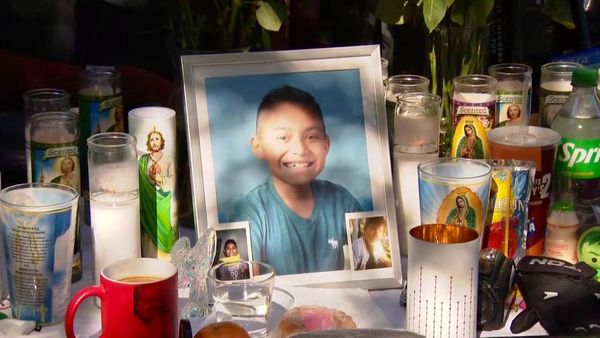
When money gets tight, Americans are often forced to cut expenses to save money. It can be especially tempting to cut or downgrade insurance coverage, since it doesn’t deliver any immediate or tangible rewards (apart from peace of mind). In fact, insurance is one purchase you make hoping that you never need it. However, canceling or downgrading insurance coverage can leave you exposed to added costs and extra stress during an emergency.
A new survey from Guardian Service found 29% of Americans downgraded or cut insurance coverage in the past year to cope with rising costs. Of those, 15% downgraded or canceled car insurance, while 8% cut health insurance and 5% downgraded homeowners coverage.
Read Next: Can You Write Off Your Home Insurance on Your Taxes?
Find Out: How Far $750K Plus Social Security Goes in Retirement in Every US Region
Each of these decisions has inherent risks. “[Cutting insurance] increases financial exposure when every dollar matters,” said Kara Credle, a licensed insurance agent at Guardian Service. Experts in each industry agreed that there are better ways to save.
Car Insurance
While car insurance is mandated in every state except New Hampshire, there are different levels of coverage you can choose. Most states require drivers to carry liability insurance. No-fault states, and a few at-fault states, also require personal injury protection, according to Progressive. If you have a car loan or lease, your lender will often require that you carry collision coverage to protect their financial investment.
Credle pointed out that 8% of Americans went from full coverage to only the required coverage last year, often once their car loans were paid off. “It’s a risky trade-off,” she said. “Cutting components … can save money now, but it might mean footing the full bill later if an accident happens.”
Before reducing your coverage, shop around for cheaper rates. You may not even need to switch insurers to get a better deal or more flexible payment terms. “Talk to your provider,” Credle said. “Many insurers offer flexible plans or discounts.”
Check Out: 9 Downsizing Tips for the Middle Class To Save on Monthly Expenses
Health Insurance
Neal Shah, chairman of Counterforce Health, an AI-powered startup that helps people fight denied health insurance claims, likened downgrading health insurance, specifically, to removing your seatbelt in a car. “You could get in a crash,” he said. “The risks really outweigh the long-term savings.”
In his book “Insured to Death: How Health Insurance Screws Over Americans — And How We Take It Back,” he wrote that roughly 60% of medical-related bankruptcies involve people who did have health insurance when they got sick. “Reducing coverage makes you even more vulnerable,” he said.
He suggested using tactics like a health savings account (HSA) and direct primary care (DPC) to reduce your overall costs. With a DPC program, patients pay a monthly or annual fee to the provider and the subscription fee covers preventive care, unlimited visits, vaccines and other elements of basic healthcare. Patients would still need insurance to cover costs like testing or specialized care.
“Direct Primary Care is underutilized and gaining momentum,” Shah said. “[It] eliminates a lot of hassle for routine care.”
Homeowners Insurance
Like car insurance, homeowners insurance is typically required by your lender if you have a mortgage. But some types of home insurance, like flood or wildfire coverage, is often optional. “Using historical data and trend, you can tailor coverage to your unique situation,” said Robb Lanham, chief sales officer for HUB Private Client.
You can take that savings and use it to make your home more resilient against the greatest perils. But this comes with risks, as weather patterns are changing. “As we are seeing, the weather is not predictable. You can’t always outsmart the unpredictable and if you guess wrong, it could cause financial disaster,” Lanham said. “The probabilities of something occurring are very seldom never.”
Sharing data from United Policyholders, CBS News reported that nearly two-thirds of fire victims were uninsured or under-insured. “In some cases, [homeowners] had to put retirement on hold because those funds were needed to rebuild,” Lanham said. “Others had to move because they could no longer afford the increased cost of rebuilding and sold their property at discounted prices. In most cases, the financial burden was enough to cause major life and lifestyle changes.”
If you can afford to take the financial risk, Lanham said you can increase your deductible or even consider a cost-sharing plan to save money. “[That] means the client pays half of the claim and the insurance company pays half,” he explained. “But this could be substantial if there was a major loss.”
A better step, he said, is “strategic mitigation planning,” a process where you make your home and lifestyle more resilient to loss and, as a result, you may also receive insurance discounts.
More From GOBankingRates
- 3 Luxury SUVs That Will Have Massive Price Drops in Summer 2025
- 4 Things You Should Do if You Want To Retire Early
- 10 Genius Things Warren Buffett Says To Do With Your Money
- 10 Used Cars That Will Last Longer Than an Average New Vehicle
This article originally appeared on GOBankingRates.com: Nearly 1 in 3 Americans Have Cut This Expense in 2025 — What Are the Risks?







